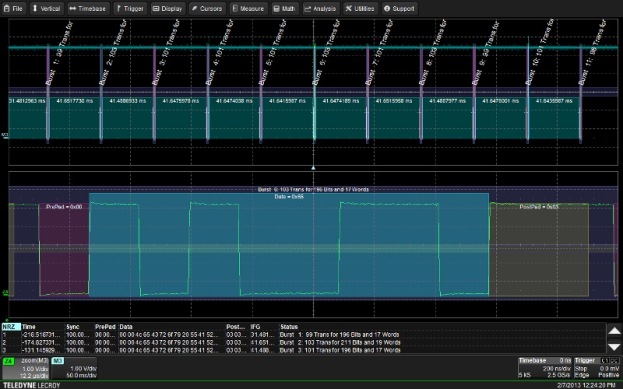Said to be the first Manchester and NRZ (non-return-to-zero) configurable protocol decoders for oscilloscpes, these software options from Teledyne LeCroy for its oscilloscope platforms let users specify a broad range of physical-layer characteristics for Manchester- or NRZ-encoded signals. In many data-communication protocols built on Manchester or NRZ encoding — including specialized buses such as Digital Addressable Lighting Interface (DALI) for control of building lighting and the Peripheral Sensor Interface 5 (PSI5) for connecting sensors to controllers in automotive applications, as well as proprietary, custom buses used for non-standardized applications — the basic Manchester and NRZ schemes are modified to create more complex, specialized protocols.

The software decoders define the grouping of bits into words, and words into frames, which simplifies analysis. Decoded information is shown in a color-coded overlay atop the physical layer waveform; the overlay expands or contracts as the user adjusts the oscilloscope timebase or zooms in on the waveform for more details.The decoders provide broad flexibility in terms of physical layer characteristics, protocol word, and frame structure as well as other parameters. Users may specify bit rates from 10 bits/s to 10 Gbits/s. Idle states, sync bits, and header and footer information can all be configured to decode custom preambles or CRC details. Flexible decoding allows data mode to be in bits or words; viewing in hex, ASCII, or decimal; and bit order to be either LSB or MSB. Search capabilities let users quickly locate specific bus details such as data, sync, or interframe gap, in long captures. Decoded data is also displayed in an interactive table and clicking on any line in the table opens a zoomed view of that instance in the waveform. (Either Mancheter of NRZ decoder, $1,450 — available now.)
Advertisement
Learn more about Teledyne Lecroy





